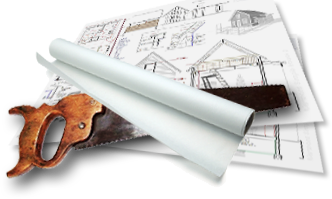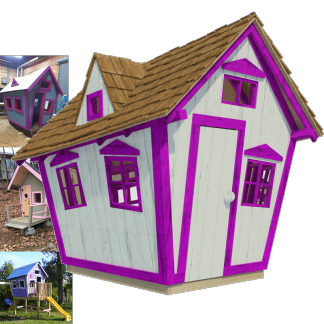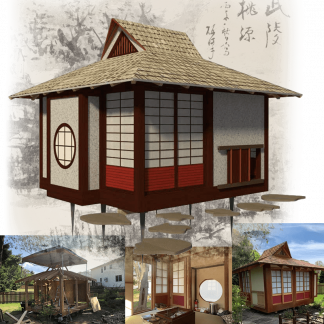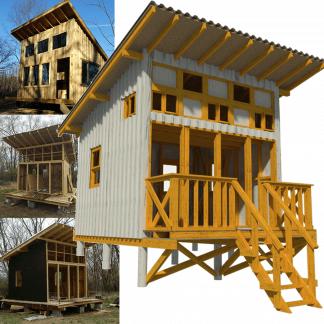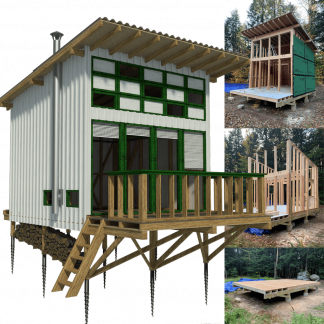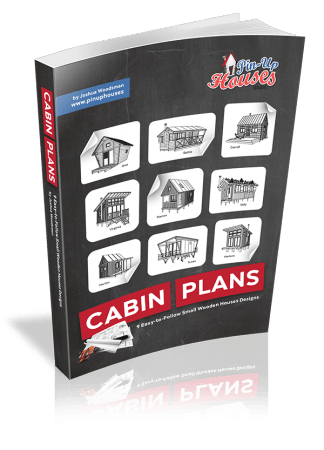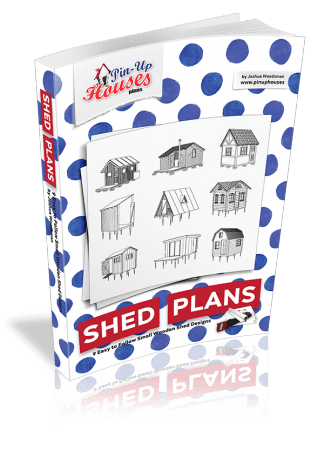The home renovation landscape will continue to transform in 2025, driven by shifting lifestyles, environmental awareness, and technological advancement. Homeowners increasingly view their residences as not merely living spaces but as multifunctional environments supporting work, recreation, wellness, and sustainability. This fundamental shift has sparked renovation demands prioritizing adaptability, energy efficiency, and personal expression through thoughtful design choices beyond mere aesthetics.
Companies specializing in home remodeling in Sacramento CA, report significant increases in projects focused on sustainable transformations and multifunctional spaces. These contractors witness firsthand how regional preferences blend with national trends, creating distinctive residential environments that reflect California’s climate advantages and progressive environmental stance. Their projects increasingly incorporate renewable materials, energy-efficient systems, and flexible layouts that adapt to changing family needs throughout different life stages.
Professionals who excel in specialized construction, such as those featured at https://jcconstruction.us/adu-builder/, apply similar sustainability principles when developing accessory dwelling units and home additions. Their experience demonstrates how compact, thoughtfully designed spaces often lead to innovation by necessitating creative solutions that eventually influence main residence renovations. These connections between different construction specialties drive industry evolution by cross-pollinating ideas and techniques.
Biophilic Design & Wellness-Centered Spaces
Natural Element Integration
Biophilic design fundamentally transforms interior environments by strengthening human-nature connections by deliberately incorporating natural elements and patterns. This approach transcends decorative plants to encompass material selection, spatial flow, and sensory experience throughout the home. Natural wood features with visible grain patterns stimulate tactile engagement while introducing organic visual rhythm. Stone surfaces with varied textures create grounding elements that connect occupants to geological processes. Views of outdoor greenery through strategically placed windows establish visual extension beyond interior confines. These elements collectively reduce stress markers, improve cognitive function, and enhance overall well-being through evolutionary connections to natural environments.
Circadian lighting systems replicate natural light patterns to support human biological rhythms. Dynamic systems automatically adjust the color temperature throughout the day—cooler, energizing light in the mornings transitions to warmer, relaxing tones in the evenings. These installations synchronize with natural daylight cycles to reinforce healthy sleep-wake patterns disrupted by conventional lighting and screen exposure. Integration with home automation allows personalized programming based on individual schedules and preferences. These systems transform lighting from purely functional or decorative elements into active physical and mental health contributors.
Indoor air quality enhancement through design represents a growing renovation priority following heightened awareness of respiratory health. Advanced ventilation systems introduce continuous fresh air exchange while recovering thermal energy to maintain efficiency. Material selection eliminates toxic compounds in conventional products—zero-VOC paints, formaldehyde-free cabinetry, and natural fiber carpeting reduce chemical off-gassing. Indoor plant integration moves beyond decoration through living walls that actively filter contaminants while adding visual interest. These approaches collectively create environments that support respiratory health while reducing allergy triggers and environmental toxins.
Wellness Space Development
Dedicated wellness areas within homes have evolved from luxury additions to essential spaces in 2025 renovations. Home gyms now incorporate specialized flooring, ventilation, and acoustic treatments that transform spare rooms into professional-quality fitness environments. Meditation spaces feature sound isolation, natural materials, and lighting designed to minimize distraction and promote mindfulness. Yoga studios include proper ceiling height, wall space for inversions, and temperature control systems for various practice styles. These purpose-built areas eliminate barriers to regular wellness routines by bringing specialized environments into daily living spaces.
Bathroom transformations increasingly focus on therapeutic experiences beyond basic hygiene functions. Hydrotherapy installations include digitally controlled showers with programmable pressure, temperature, and spray patterns that target specific muscle groups. Chromotherapy lighting introduces color-based mood enhancement during bathing. Steam systems provide respiratory benefits and deep muscle relaxation within compact shower enclosures. Heated flooring eliminates the shock of cold tile that disrupts relaxation. These features transform daily routines into wellness rituals promoting physical and mental restoration.
Sleep optimization through bedroom environment design acknowledges sleep’s fundamental role in health maintenance. Sound attenuation through insulation upgrades and acoustic panels creates quiet retreats even in busy households or urban settings. Blackout window treatments eliminate light pollution that disrupts melatonin production. Temperature regulation systems maintain ideal sleeping conditions throughout the night. Natural fiber bedding and organic mattress materials reduce chemical exposure during sleep hours. These enhancements transform bedrooms into true restoration chambers that support quality sleep as the foundation of overall wellness.
Wellness-focused renovations should consider individual health needs and preferences. Features that benefit specific individuals may prove unnecessary or detrimental to others with different conditions or sensitivities. Professional consultation with both design experts and healthcare providers ensures wellness investments address specific household requirements rather than following generic trends.
Smart Home Ecosystems & Flexible Space Design
Integrated Technology Systems
Unified control systems have replaced the fragmented smart home approach that characterized early adoption. Integration hubs now coordinate previously disparate systems through standardized communication protocols that eliminate compatibility issues. Central dashboards comprehensively manage lighting, climate, security, entertainment, and appliances through intuitive interfaces. Voice activation extends throughout homes with architecturally integrated microphones that eliminate visible technology while maintaining functionality. These cohesive ecosystems transform previously complex management into seamless interactions that enhance convenience without creating technological friction.
AI-powered home management introduces predictive functionality beyond basic automation. Learning systems analyze household patterns to anticipate needs—preheating ovens before typical meal preparation times, adjusting lighting based on activity patterns, or optimizing heating and cooling schedules around occupancy. Proactive maintenance alerts identify potential system issues before failure occurs, from refrigerator compressor anomalies to HVAC inefficiencies. Energy management algorithms continuously adjust consumption based on occupancy, weather conditions, and utility rate fluctuations. These intelligent systems transform homes from passive shelters into responsive environments that proactively serve occupant needs.
Privacy considerations have become central to technology integration as concerns about data security grow. Local processing systems minimize cloud dependence by handling sensitive information within the home rather than transmitting it to external servers. Physical switches override automated systems when desired, maintaining occupant control regardless of technological sophistication. Encrypted communication protocols protect household data from unauthorized access. User-friendly privacy dashboards provide transparency regarding what information devices collect and how it’s utilized. These approaches balance technological convenience with personal privacy through thoughtful implementation that respects boundaries.
Adaptable Living Environments
Dynamic room conversions enable spaces to serve multiple daily functions without compromise. Motorized furniture systems transform living areas into workspaces through tables emerging from walls or ceilings. Murphy beds with integrated office components make guest rooms productive workspaces between visits. Movable partition systems divide open areas into temporary zones for simultaneous activities. These transformative elements effectively double functional square footage without structural expansion by enabling the sequential use of identical spaces for different purposes.
Household zoning accommodates the reality of multiple simultaneous activities within shared environments. Acoustic management through strategic material selection minimizes sound transfer between zones. Visual privacy screens create separation without permanent barriers. Lighting systems establish distinct environments within contiguous spaces through directional focus and intensity variation. Thermal microzones allow different temperature preferences within the same home. These zoning strategies enable family members to pursue individual activities without isolation, maintaining connection while respecting different functional needs.
Storage solutions facilitating quick transformations have become essential to flexible living—concealed cabinets house items needed for specific activities while maintaining clean aesthetics when not in use. Furniture with integrated storage eliminates clutter between function changes. Modular systems adapt to changing needs through reconfigurable components rather than replacement. Vertical storage maximizes capacity within limited footprints. These solutions enable rapid transitions between functions by minimizing the effort required to transform spaces, making flexibility practical rather than merely theoretical.
Technology integration involves significant investment that requires planning for current and future needs. Systems with proprietary standards may limit future expansion options. Professional assessment helps identify appropriate technology levels based on household technical comfort and maintenance capabilities. Implementation plans should include training for all household members to ensure technology enhances rather than complicates daily living.
Indoor-Outdoor Connection & Personal Expression
Expanded Living Boundaries
Year-round outdoor functionality has transformed exterior spaces from seasonal amenities to permanent living area extensions. Weather-resistant furnishings incorporating marine-grade materials provide indoor comfort in exterior settings. Overhead structures ranging from motorized pergolas to tension sails offer protection from precipitation and harsh sunlight. Heating elements, including fire features, infrared panels, and radiant flooring, extend outdoor seasons in cooler climates. Cooling systems combining misting technology and strategically positioned fans create comfortable environments despite the summer heat. These enhancements transform outdoor spaces from occasional-use areas into genuine living space extensions that expand functional square footage.
Transitional spaces blur traditional boundaries between interior and exterior environments. Retractable glass walls replace conventional windows and doors, creating openings that span entire walls when weather permits. Flush thresholds eliminate level changes between interior and exterior flooring, creating seamless transitions that accommodate aging-in-place considerations. Consistent flooring materials extending from inside to outside reinforce visual continuity. Indoor-outdoor kitchens feature cooking components on both sides of permeable barriers. These design approaches create fluid boundaries that expand perceived living space while strengthening connections to natural surroundings.
Climate adaptation features customized outdoor living based on regional conditions. Wind mitigation through strategic landscaping and architectural elements protects outdoor areas from discomfort in breezy locations. Rain gardens manage precipitation in wet climates while creating aesthetic features. Shade structures positioned based on solar path analysis provide comfort in hot regions. Removable screens block insects while maintaining views and airflow. These regionally appropriate solutions transform outdoor spaces from generic additions to customized environments that address specific climate challenges.
Personal Design Expression
Statement architectural elements replace generic aesthetics through distinctive features that express individual character. Geometric ceiling treatments transform previously ignored surfaces into focal points. Sculptural staircases function as artistic installations while providing practical vertical circulation. Handcrafted front doors create meaningful entry experiences that set homes apart. Custom tile installations transform utilitarian surfaces into creative expressions. These signature elements provide personal meaning beyond mere decoration, creating authentic environments that reflect occupant identity rather than fleeting trends.
Mixed material applications create textural depth through thoughtful combinations that stimulate sensory engagement. Contrasting surface pairings—rough stone against smooth concrete, warm wood beside cool metal, matte finishes adjacent to reflective surfaces—create visual and tactile interest beyond color alone. Unexpected material applications repurpose traditional elements in novel ways, such as leather floor tiles or concrete countertops with embedded objects. Transitional material gradients blend different zones through subtle progression rather than abrupt changes. These sophisticated approaches create layered environments that reveal additional detail through continued experience rather than delivering immediate visual impact alone.
Artisan craftsmanship has experienced revival through renewed appreciation for human-created elements in an increasingly digital world. Hand-forged metal fixtures display subtle irregularities that machine production cannot replicate. Custom woodwork featuring traditional joinery techniques connects to historical traditions while serving contemporary functions. Handmade ceramic tiles incorporate subtle variations that create living surfaces. Commissioned art installations provide one-of-a-kind focal points specific to individual spaces. These crafted elements introduce authenticity that mass production cannot achieve, building homes with soul and specificity that resist homogenization.

